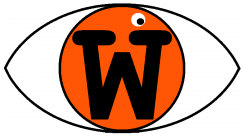WHAT’S IT ABOUT?
A once-hopeful young Wall Street bond trader, Nick Carraway (Tobey Maguire), is in therapy, having lost his enthusiasm for everything and everyone – except one man: the enigmatic millionaire Jay Gatsby (Leonardo DiCaprio). As part of his treatment, Nick’s psychiatrist advises him to write down his recollections and himself becomes as enthralled by the story as his patient.
Nick recounts how in the early 1920s, he moved into a modest house next door to Gatsby’s palacial residence on Long Island, where he hosted a string of glitzy parties that everyone who was anyone attended.
Directly across the bay, in a similarly magnificent mansion, Nick’s cousin Daisy (Carey Mulligan) lived with her philandering family-moneyed husband Tom (Joel Edgerton).
A tea party with his cousin was more in keeping with Nick’s experiences, until he received an invitation to one of Gatsby’s celebrated events. There, he was confused to discover that not only had none of the guests ever met Gatsby, they didn’t even know anything about him. But a man with so much money generated gossip and rumour that intrigued him all the more.
At the party, Gatsby introduced himself to his guest – and asked him to set up a meeting with his cousin.
As the truth about Gatsby’s past begins to emerge, in a somewhat contrived fashion, tales of forbidden love, passion, hope, and romantically-charged, ruthless ambition come to the fore, in Baz Luhrmann’s adaptation of F Scott Fitzgerald’s classic novel.
WHAT’S IT LIKE?
Baz Luhrmann does what Baz Luhrmann does – but this time in 3D. Lavish, colourful, noisy sets with hundreds of extras singing and dancing while the protagonists fall in love, talk about falling in love or similar.
It’s no surprise to hear Luhrmann use modern music but in a time-appropriate style, so this time, we have Beyonce’s music played in the 1920s style – an interesting choice, given that the film’s executive producers included Jay-Z.
There’s much to enjoy here visually, from the costumes and the mansions to the gorgeous cast-members and the fireworks going on above their heads. It’s interesting that Luhrmann uses the 3D format in a way rarely used for romantic dramas – but while he effectively uses many sweeping zooming shots – into buildings or over the top of cars, for example – one of the effects of 3D is to flatten the space to the extent that rather than an audience being able to choose which bit of the screen they want to look at, they’re given no choice, as everything else in the frame is out of focus, which seems to render the experiment pointless.
One problem with the film is that while it’s entertaining to watch and listen to, the characters themselves lack empathy. Like the 3D format, having Gatsby’s story recounted by Nick – a relative outsider – a slightly unreliable observer – puts too much emotional distance between the viewer and the story – he is the main character, and a drama where the main character faces no peril of any kind, lacks drama. The story is, in large part, a joyous romp, but someone else’s joyous romp. Having the story narrated by Nick doesn’t make it any more dramatic – or indeed any less dramatic. It just makes it very difficult to engage with the character who gets the most screen time. And how reliable he is as a story-teller is never really revealed, rendering the deceit even more pointless. This is, of course, not Luhrmann’s fault, as he’s rightly sticking to Fitzgerald’s structure, which perhaps is more suited to a novel.
This is literary framing device is being increasingly used in film, as directors increasingly turn to books for their source material. Ang Lee’s Life of Pi and Mira Nair’s The Reluctant Fundamentalist are recent examples of narratives being framed in terms of someone looking back at earlier events, although at least in those cases, the events were relevant to themselves.
All the adjectives you might want to throw at the film – flashy, brash, flamboyant, gaudy, over-stylish – could equally be applied to the Gatsby of the novel, which at least gives the adaptation a sense of consistency.
But it’s certainly one of those films that could be described as style-over-substance, although that’s not necessarily an insult in this case. It’s what you’d expect going in and it’s what you get, so in that sense, Luhrmann and co are probably living up to expectations.
